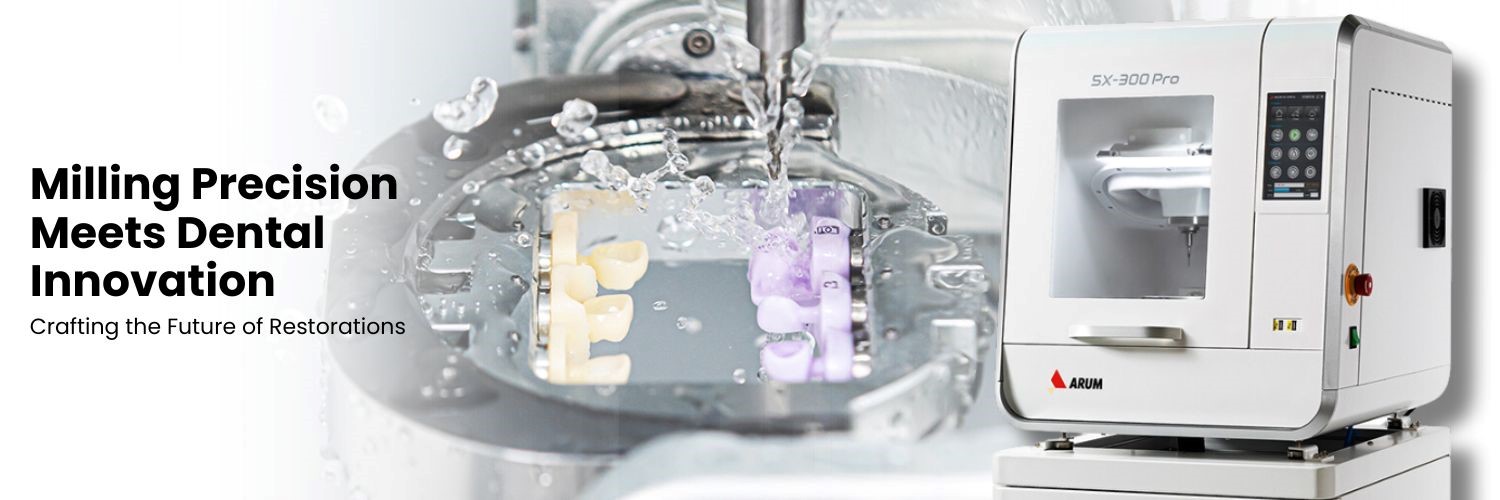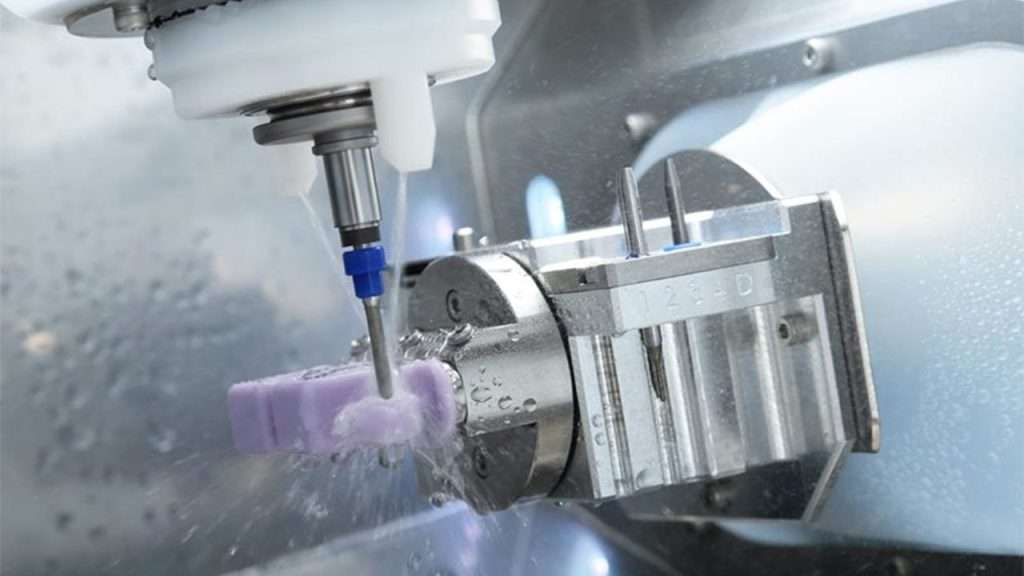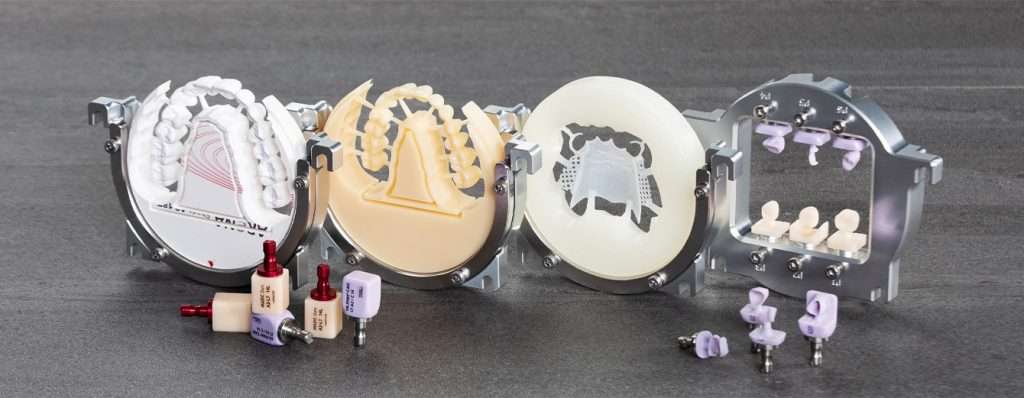Unlocking Precision in Dental Surgery: Milling Innovation

The advent of precision milling and CAD/CAM technologies has been nothing short of transformative for the field of dentistry, particularly in the realm of dental restorations. This evolution marks a pivotal shift from traditional, manually intensive techniques to highly accurate, efficient, and digitalized processes. Here’s how these innovations are reshaping dental restoration practices:
– Revolutionizing Dental Restoration: Precision milling, coupled with CAD/CAM technologies, has revolutionized how dental restorations are crafted. The meticulous accuracy achievable through digital design and milling processes significantly enhances the fit, function, and aesthetic of dental prosthetics.
– Enhanced Efficiency and Accuracy: The transition to digital processes has not only streamlined the creation of dental restorations but also improved their accuracy. Dentists and dental technicians can now design and fabricate restorations that closely mimic natural teeth, both in appearance and functionality, with reduced turnaround times.
– Customization at Its Core: One of the most significant benefits of precision milling and CAD/CAM technology is the ability to produce custom-fit restorations tailored to the individual’s anatomy. This bespoke approach ensures that each restoration not only fits perfectly but also blends seamlessly with the patient’s existing dentition, thereby improving comfort and satisfaction.
– Material Advancements: The technology enables the use of a broader range of high-quality materials, including zirconia, lithium disilicate, and various resins. These materials offer superior strength, durability, and esthetics, further enhancing the quality of the final restorations.

Evolution of Dental Milling Technologies
The journey of dental milling technologies from manual fabrication methods to the advanced digital processes we see today marks a significant evolution in the field of dental restoration. This progression has transformed how dental prosthetics are created, making the process more accurate, efficient, and tailored to individual patient needs.
From Manual to Digital
– Early Beginnings: Initially, dental restorations were crafted manually. Technicians relied on hand tools and simple machines to carve out prosthetics from blocks of material, a process that was both time-consuming and prone to errors.
– Introduction of CAD/CAM: The introduction of Computer-Aided Design (CAD) and Computer-Aided Manufacturing (CAM) technologies represented a paradigm shift. These technologies allowed for the digital design and precise milling of dental restorations, drastically improving accuracy and reducing fabrication time.
– Adoption of Digital Scanners: Alongside CAD/CAM, the use of digital scanners eliminated the need for physical impressions, further streamlining the process and enhancing comfort for patients.
The Arum 5x-300 Pro Dental Milling Machine
In the current landscape of state-of-the-art digital milling processes, the Arum 5x-300 Pro Dental Milling Machine stands out as a prime example of technological advancement.
– Precision and Versatility: Designed to meet the demands of modern dental laboratories, the Arum 5x-300 Pro offers unparalleled precision. Its capability to work with a wide range of materials, from zirconia to titanium, makes it exceptionally versatile for various dental restoration applications.
– Advanced Features: This machine boasts advanced features such as 5-axis simultaneous milling, enabling it to create complex geometries that were challenging or impossible to achieve with earlier technologies. This feature is crucial for crafting intricate dental implants and bridges with a perfect fit.
– Speed and Efficiency: With its high-speed milling capabilities, the Arum 5x-300 Pro significantly reduces the time required to produce a dental prosthetic. This efficiency allows dental labs to increase their output without compromising quality, providing quicker turnaround times for patients.
– User-Friendly Interface: Despite its advanced capabilities, the Arum 5x-300 Pro is designed with a user-friendly interface, making it accessible to technicians of varying skill levels. This ease of use, combined with its robust performance, makes it a valuable asset in any dental lab aiming for high-quality results.

The Role of CAD/CAM in Modern Dental Restorations
The integration of Computer-Aided Design (CAD) and Computer-Aided Manufacturing (CAM) technologies has been nothing short of revolutionary in the field of dentistry, particularly in the domain of dental restorations. These digital tools have fundamentally transformed how dental solutions are conceptualized, designed, and executed, offering a leap forward in the customization and precision of dental prosthetics.
– Customization at Its Core: CAD/CAM technology allows dental professionals to create highly accurate and personalized dental restorations that fit the unique contours of each patient’s mouth. This bespoke approach ensures that restorations like crowns, bridges, veneers, and implants are not only more comfortable for the patient but also achieve a superior aesthetic match to natural teeth.
– Streamlined Workflow: The CAD/CAM process begins with digital imaging, using intraoral scanners to capture detailed 3D models of the patient’s dentition. These digital impressions eliminate the need for traditional physical molds, offering a more comfortable experience for the patient and a more precise starting point for the restoration design.
– Precision Manufacturing: Once the restoration is designed using CAD software, the CAM component takes over, controlling dental milling machines or 3D printers to fabricate the restoration from a block of ceramic or other material. This automated manufacturing process is highly precise, reducing the margin of error seen in manual techniques and ensuring a high-quality final product.
– Efficiency and Accessibility: CAD/CAM technologies have significantly reduced the turnaround time for dental restorations. What used to take weeks can now be accomplished in days, or even hours, enabling faster treatment completion and reducing the number of dental visits required. This efficiency has made advanced dental restoration solutions more accessible to a broader range of patients.
– Innovation and Continued Advancement: The future of CAD/CAM in dentistry promises even greater innovations. Continuous improvements in software algorithms, scanning technology, and materials science are expected to enhance the capabilities of CAD/CAM systems further. This ongoing development ensures that dental professionals can keep offering cutting-edge solutions to their patients.
Breakthrough Materials in Dental Milling
The evolution of materials available for dental milling machines has significantly broadened the spectrum of possibilities for dental restorations, combining both aesthetic appeal and enhanced durability. The advancement in these materials has opened up new frontiers in the creation of dental prosthetics, allowing for solutions that closely mimic the natural appearance of teeth while ensuring longevity and strength. Let’s delve into some of the key materials that are revolutionizing the field:
– Zirconia: Known for its exceptional strength and durability, zirconia is a popular choice for crowns and bridges. Its ability to withstand the wear and tear of daily use without fracturing or wearing down makes it an ideal material for long-lasting dental restorations. Moreover, zirconia’s translucency can be adjusted to match the natural color of teeth, enhancing the aesthetic outcome of restorations.
– Lithium Disilicate: This glass-ceramic material stands out for its excellent aesthetic qualities, including a natural-looking translucency and color matching. Lithium disilicate is particularly favored for veneers and crowns in the aesthetic zone due to its ability to replicate the light-reflecting properties of natural teeth.
– Polyetheretherketone (PEEK): PEEK is a high-performance polymer that offers a unique combination of durability, flexibility, and biocompatibility. Its shock-absorbing properties and natural tooth-like color make it an excellent choice for implant abutments and frameworks, providing a comfortable and visually appealing solution for patients.
– PMMA (Polymethyl Methacrylate): PMMA is widely used for temporary crowns, bridges, and mock-ups due to its ease of milling and excellent aesthetic properties. Although not as durable as zirconia or lithium disilicate, PMMA restorations can provide a highly accurate and aesthetically pleasing preview of the final prosthetic, aiding in treatment planning and patient satisfaction.
– Nano-Ceramics: This category of materials combines the strength of ceramics with the versatility of composite resins, offering an outstanding balance of durability and aesthetics. Nano-ceramics are particularly suited for inlays, onlays, and crowns, where their excellent wear resistance and natural appearance can be fully leveraged.

Enhancing Dental Restoration with Advanced Milling Techniques
Advanced milling techniques have dramatically transformed the field of dental restoration, bringing about a significant improvement in the precision, aesthetics, and durability of dental prosthetics. These techniques leverage state-of-the-art dental milling machines capable of fabricating restorations with unparalleled accuracy. Below are examples illustrating how precision milling contributes to the success of complex dental restoration projects and enhances patient outcomes:
– Custom Implant Abutments: Traditional methods often struggled to achieve a perfect fit for implant abutments, leading to potential complications or adjustments. Precision milling allows for the custom fabrication of implant abutments tailored to the patient’s unique dental anatomy. This customization ensures a better fit, improves the longevity of the implant, and enhances the overall aesthetic outcome, thereby significantly increasing patient satisfaction.
– Full-arch Reconstructions: Full-arch reconstructions are among the most challenging dental restoration projects due to their complexity and the precision required to ensure functionality and comfort. Advanced milling techniques enable the production of full-arch prosthetics with exacting detail, fitting perfectly with the patient’s existing teeth and gum contour. This precision reduces the need for adjustments and remakes, shortening the treatment time and improving the patient experience.
– Multi-material Restorations: The ability of modern dental milling machines to work with a wide range of materials, from metals to ceramics to composite resins, allows for the creation of multi-material restorations. For example, the milling machine can fabricate a crown with a zirconia core and a porcelain exterior, combining durability with a natural appearance. This multi-material capability enables dental professionals to offer restorations that meet both the functional and aesthetic needs of their patients.
– Inlay and Onlay Restorations: Precision milling has made inlay and onlay restorations more accurate and durable. By ensuring a precise fit, these techniques minimize the risk of bacterial infiltration and subsequent decay, leading to longer-lasting restorations. The accuracy of the milling process also ensures that the restorations blend seamlessly with the natural teeth, enhancing the visual outcome.

Conclusion
The advancements in milling precision and digital innovations have undeniably become the cornerstone of modern dental restoration, heralding a new era in dental care. These technological strides have not only streamlined the fabrication process of dental prosthetics but have also significantly enhanced the accuracy, aesthetics, and durability of the final products. By harnessing the power of CAD/CAM systems, digital imaging, and advanced milling machines, dental professionals are now able to offer custom, patient-specific solutions that were once deemed challenging, if not impossible.
The role of precision milling in today’s dental practices cannot be overstated. It has enabled the creation of restorations that perfectly match the patient’s natural dentition in both form and function, thereby improving patient satisfaction and overall treatment outcomes. The ability to work with a diverse array of materials—from high-strength ceramics to composite resins—further ensures that each restoration not only looks natural but also stands the test of time.
However, the journey does not end here. The ongoing need for advancement in dental milling technologies and digital innovations is critical to addressing the ever-evolving challenges of dental care. As we look to the future, the focus must remain on developing even more sophisticated equipment, materials, and software that can further elevate the standards of precision and efficiency in dental restoration work.


